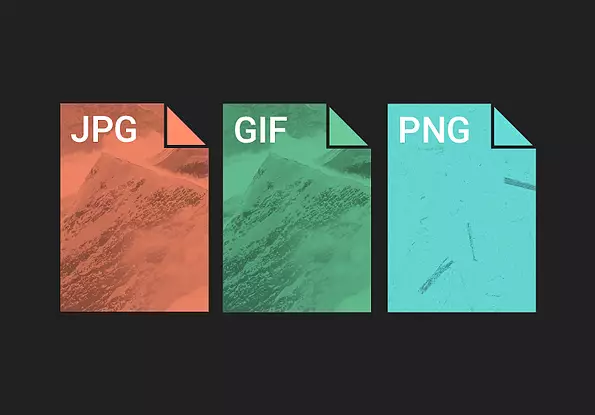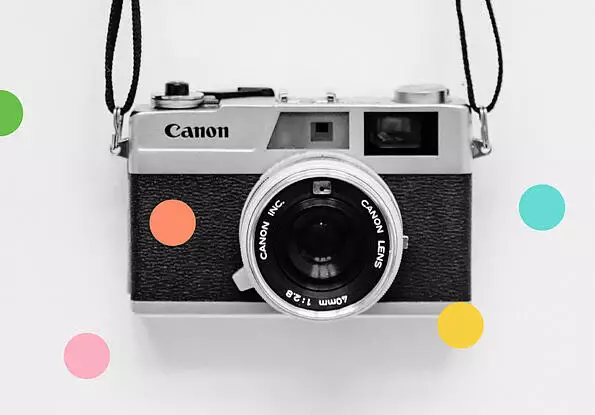Contrary to the assumption of conspiratorial circles from creative and marketing agencies, different image file types such as JPG, PNG, and Co. don’t exist to unsettle or annoy you. Instead, each of these image types are specifically designed for various application areas. They save you time and energy when utilized correctly. Therefore, knowing how to use these different image formats to improve the graphic display and get the best out of your work can be meaningful.
Inherently, all images undergo a digital compression procedure that preserves a picture's specific properties and discards others. The goal is to enhance the image accordingly to its later use while reducing the file to an appropriate size. For this reason, the fundamental prerequisite for choosing a suitable image format is knowing what you will use it for later.
What image formats do I apply and when?
You don’t just yet have the confidence and knowledge when dealing with image format types?
No worries!
In the following segments, we’ll discuss the JPG, GIF, and PNG, whose properties are customized explicitly for the internet (e.g., websites). As always, we keep things clear and simple for you. That’s we decided to limit ourselves to JPG, GIF, and PNG. Image formats such as TIFF, PSD, or RAW are excellent for image editing as well, but they are not intended for websites - Though they are often falsely placed here.
After reading, future image formatting will be a breeze, so let's get to it!
JPG – the universal compression wonder
The JPG or JPEG (Joint Photographics Experts Group) is one of the most used image formats due to its ability to be opened up and converted by almost any standard program - all while file size remains relatively small. Additionally, the JPG particularly fits complex photos of various shades and depths due to its extensive color spectrum (up to 16 million colors).
Still, the devil lies in the details here: Although the JPG process allows image files to be reduced in size many times, this compression process always means loss of image quality. Despite smaller files having the apparent advantage of consuming less storage space, a compromise between image quality and file size is best when compressing.
GIF – the leading expert for animations and graphics
Picture the following scenario: You just prepared a delicious Caesar salad with your own creative twist and now wish to complement your food blog with a picture of just that salad with all its brilliance.
Before posting, you may ask yourself: What format type is best to apply for such an occasion?
Well, the answer is: you may want to avoid GIF formatting.
Why? GIF is limited to 256 colors, meaning the display of complex photos in this format is unfortunately mostly grainy and not very qualitative.
However, there is a solution!
When it comes to simple color areas with little depth, such as logos, buttons, and infographics, GIF is a real hero. Even in compressed form, sharp edges of fonts or graphic shapes are displayed more precisely by GIF than JPG. Another advantage of this format is its small file size. Hence, showcasing simple animations incredibly quickly, with little loading time, is possible. Besides, GIF masters the layout of layers and transparency, making it a helpful tool when using graphics on a homepage.
PNG – loss-free and versatile
The PNG (Portable Network Graphics) combines most of JPG and GIFs' strengths while dispensing with their weaknesses. Like the JPG, the PNG format displays images with a broad color spectrum. In contrast to its more widespread sibling, a PNG is lossless when compressed, meaning that even the most delicate shades and nuances of a photo stay preserved. However, one major downside of PNG is the file size. Such a file can be up to ten times larger than a comparable JPG after compression. Therefore, the JPG is still preferable to the PNG using high-resolution, non-graphic images on a website where storage space and loading times are prioritized.
The case is different for photos that must contain a considerable proportion of transparency (e.g., detail and quality). Through the so-called "alpha channel" of a PNG, color parts of a photo are made entirely or partially transparent. Because a PNG can also be saved in 256 colors, it is well suited for displaying graphics and simple color areas. Therefore, PNG especially has its strong points in the free and exploratory use of pictures. Additionally, compression is even more efficient than that of the GIFs', so files are even smaller.
Wouldn't that mean the death of GIF?
Don't worry; it doesn't.
Since the classic PNG doesn't support animations, we'll continue to find memes on 9GAG and in our WhatsApp groups in GIF format.
So which format type is the correct one to use?
As they say in marketing: "Well, it depends...."
After reading this short piece, you've probably noticed that this post's topic is quite extensive, while time is scarce.
Don't fret!
We'll summarize everything without diminishing its importance: the proper image format choice depends primarily on its intended application. Each format covered above has known advantages and disadvantages – but JPG, GIF, and PNG can only exhaust their full potential when considering each's unique characteristics. Finally, it would be best if you always tried to find a healthy middle ground between quality and compression in principle.
|
|
|
|
|
|
|
|
|
|
|
|
|
|
|
|
Does the photo require high compression?
|
|
|
|
|
|
|
Should animation be possible?
|
|
|
|
|
|
|
|
|
|
|
|
|
|
|
Should web loading times be optimized?
|
|
|
|
|
|
|
Images and media in companies: avoid unnecessary work with digital asset management
Whether in marketing, communication, or PR, the media pool in companies and agencies is often huge. Hence a digital asset management software is helpful here. Media files store centrally; every user can access media files, download media in the desired format, and share anything quickly and securely with other employees and external companies. The benefit: Media is found, organized, and disseminated much quicker. Thanks to the integration of Adobe Photoshop, InDesign, Office, and CMS such as WordPress or TYPO3, the entire media workflow is accelerated when organizing media and documents, ultimately leaving employees more time for essential work.
Sabrina
Sabrina writes for pixx.io about everything that concerns you in your day-to-day work and helps you to overcome challenges in content and social media marketing, image formats or compliance. When it comes to complex topics, she prepares the knowledge of media and legal experts for you in an understandable way.





